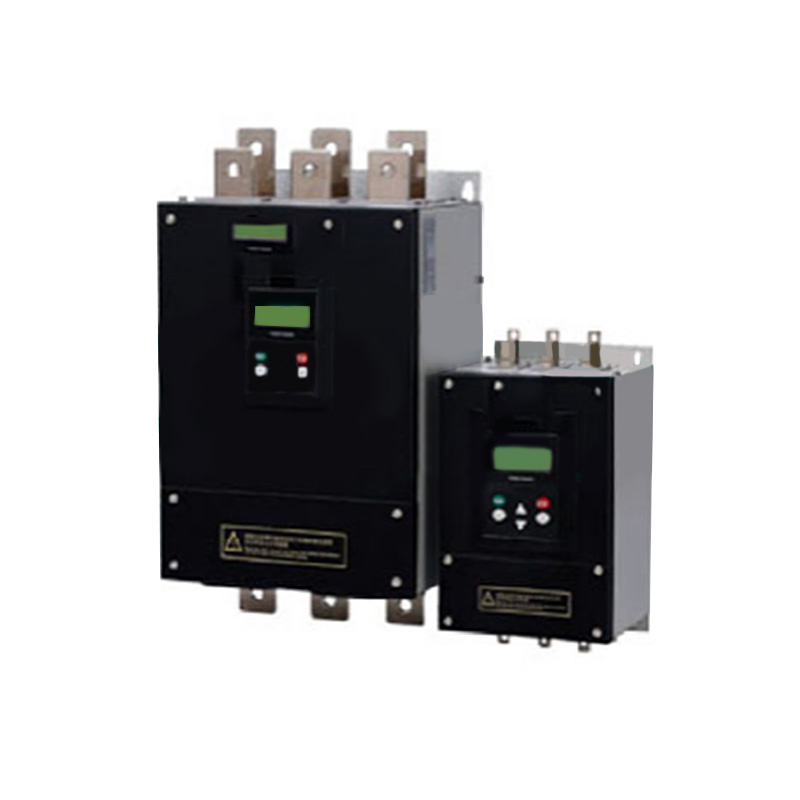How Soft Motor Starters Work
2024-07-05
A soft motor starter, also known as a soft starter, is an electronic device used to control the acceleration of electric motors. Unlike traditional direct-on-line (DOL) starters that apply full voltage immediately upon start-up, soft starters gradually ramp up the voltage supplied to the motor, thereby reducing the starting current and torque. This gradual acceleration helps in minimizing mechanical stress on the motor and connected machinery, prolonging their lifespan and improving operational efficiency. Here's a detailed guide on the use and benefits of soft motor starters:
How Soft Motor Starters Work
1. Voltage Ramp-Up:
- Initial Phase: When the motor is started, a soft starter initially applies a reduced voltage to the motor windings. This prevents the motor from drawing excessive current during start-up.
- Ramp-Up Period: Over a brief period, the soft starter gradually increases the voltage supplied to the motor. This results in a controlled acceleration of the motor, allowing it to reach operating speed smoothly.
2. Torque Control:
- Current Limitation: Soft starters limit the inrush current to the motor, which helps in controlling the torque generated during start-up.
- Smooth Operation: By reducing the sudden mechanical shock to the motor and connected machinery, soft starters ensure smoother operation and reduced wear and tear.
3. Built-in Protection:
- Overload Protection: Soft starters often include features such as overload protection, which safeguard the motor from overheating due to excessive current draw.
- Voltage Surges: They also help in mitigating voltage surges and spikes that can occur during motor start-up, protecting both the motor and connected electrical systems.
Benefits of Using Soft Motor Starters
- Extended Motor Life: By reducing mechanical stress and thermal cycling during start-up, soft starters help extend the lifespan of electric motors and connected equipment.
- Energy Savings: Soft starters lower the initial current surge, reducing demand charges and improving energy efficiency.
- Smooth Operation: They ensure smoother acceleration and deceleration of motors, leading to reduced vibrations and noise levels in machinery.
- Improved Control: Soft starters provide precise control over motor acceleration and torque, making them suitable for applications requiring delicate handling or precise speed control.
- Reduced Maintenance: By minimizing wear and tear on motor components, soft starters help reduce maintenance costs and downtime.
Applications of Soft Motor Starters
- Pumps and Fans: Used in HVAC systems, water pumps, and industrial fans to reduce starting current and control motor speed.
- Conveyors: Applied in conveyor systems to prevent jerky starts and reduce mechanical stress on belts and rollers.
- Compressors: Used in air compressors to manage motor acceleration and protect against sudden load changes.
- Centrifuges: Applied in equipment like centrifuges to ensure smooth acceleration and precise control of rotational speed.
Considerations for Installation
- Compatibility: Ensure the soft starter is compatible with the motor type and voltage rating.
- Sizing: Properly size the soft starter based on the motor’s horsepower and current rating to ensure effective operation.
- Installation: Follow manufacturer guidelines for installation and wiring to ensure safety and optimal performance.
- Configuration: Set parameters such as ramp-up time and current limits according to the specific requirements of the motor and application.
By incorporating a soft motor starter into your motor-driven systems, you can achieve smoother operation, extend equipment lifespan, and improve overall efficiency while minimizing energy consumption and maintenance costs.



